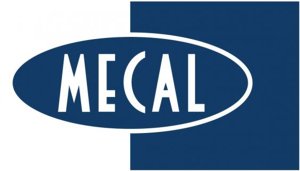Background
MECAL has a long history in supporting the design-process by means of virtual testing/prototyping using FEM-analyses. During the last decade a trend can be observed towards simulation-driven-design, in which numerical simulations acquire an even more prominent role in the earlier stages of the design process. On the one hand this trend is driven by software development, enabling automized optimization studies. Examples of this are numerical Design-of-Experiments to efficiently explore a pre-defined design space, but also Topology Optimization in which the optimization algorithm is granted even more design-freedom. On the other hand, this trend is strongly driven by the upcoming of Additive Manufacturing (AM; 3D printing) as a production technique, as it has much less manufacturing constraints compared to traditional manufacturing methods and thereby also allowing an extensive design space from a manufacturing point of view. Both trends come together here, since topology optimization yields designs that can only be 3D-printed sometimes.
 However, this manufacturing method comes with its own problems of all kinds. One of them is thermo-mechanical deformations that result from the thermal cycle of heating-melting-solidification-cooling- heating- etc., that the product is going through. This leads to large inaccuracies in the end-product, meaning tolerances or extra required post-processing steps. Commercial software packages offer different tools to simulate the AM-process and enable users to predict the amount deformation of the end-product. ANSYS for example, offers the software modules: Additive Print and Additive Suite, each having their own functionalities.
However, this manufacturing method comes with its own problems of all kinds. One of them is thermo-mechanical deformations that result from the thermal cycle of heating-melting-solidification-cooling- heating- etc., that the product is going through. This leads to large inaccuracies in the end-product, meaning tolerances or extra required post-processing steps. Commercial software packages offer different tools to simulate the AM-process and enable users to predict the amount deformation of the end-product. ANSYS for example, offers the software modules: Additive Print and Additive Suite, each having their own functionalities.
Benchmarking and understanding these (FEM-)software tools is the main goal for this assignment.
Details
The study starts with a review and continuation of a literature study about AM from an earlier internship, with the goal to find out more about the different available solution algorithms that are commonly used in commercial software. Optionally, also some desktop/market research on other performed benchmark studies can be added to this assignment (depending on availability of such studies).
Next part will be the execution of a benchmark study, in which there are two different possible paths:
- Continuation of benchmark using Additive Print. This study has been started-up in a previous internship, but should be further extended with the variation of the different simulation options and more extensive comparison to actually printed objects. Interpretation of the observed differences/phenomena in relation to the simulation settings (and underlying algorithms) forms an important aspect.
- Start-up a benchmark using Additive Suite (similar to the earlier Additive Print benchmark), also varying the different simulation options, but for a limited amount of products. A comparison should be made with actually printed products and/or the results from Additive Print (accuracy, but also criteria like computational cost). Also here, interpretation of the observed differences/phenomena in relation to the simulation settings forms an important aspect.
The results will reported and presented to the design and analysis department.
For more info please contact:

